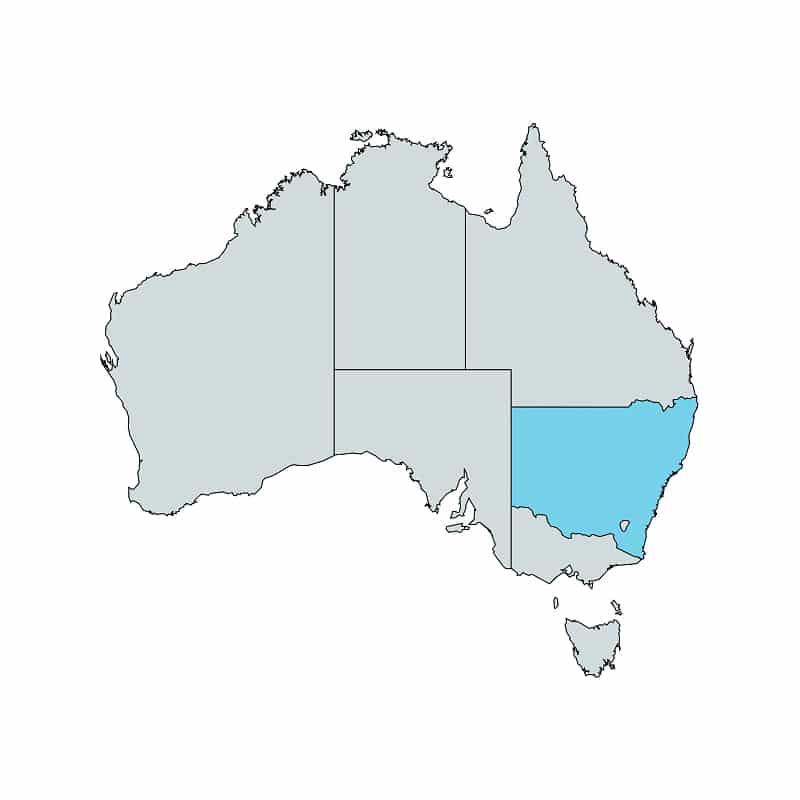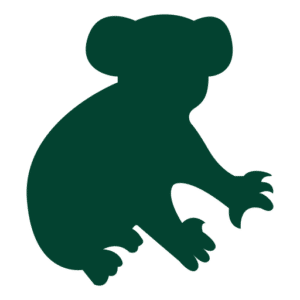Bunyip is a wildlife-friendly sanctuary located north of Batemans Bay and involved in the rehabilitation of native animals. It is the owner’s intent for the property to be used for education and conservation purposes including permaculture and sustainable off-grid living.
Bunyip covers 18 hectares of native bushland surrounded by state forest on three sides and sloping between a ridge and a semi-permanent freshwater creek. A third of the property is prone to periodical flooding and it is a site of immense conservation importance as it contains River-flat Eucalypt Forest on Coastal Floodplains which is listed as an Endangered Ecological Community in NSW. Vegetation is riparian along the creek line with drier species heading up the ridges and includes forest red gums (Eucalyptus tereticornis) – the typical dominant species of the Community – white stringybarks (E. globoidea), Sydney peppermints (E. piperita), Sydney blue gums (E. saligna) and black wattles (Acacia mearnsii).
Examples of wildlife species known to be found on the property include red-necked wallabies (Macropus rufogriseus), swamp wallabies (Wallabia bicolor), eastern grey kangaroos (Macropus giganteus), long-nosed bandicoots (Perameles nasuta) and sugar (Petaurus breviceps), greater (Petauroides Volans) and yellow bellied (Petaurus australis) gliders.
Bunyip is abundant in birdlife providing part of the home range for some species while others are seasonal visitors; these include black swans (Cygnus atratus), Australian wood ducks (Chenonetta jubata), wedge-tailed eagles (Aquila audax), brown goshawks (Accipiter fasciatus), white-headed pigeons (Columba leucomela), brown cuckoo-doves (Macropygia amboinensis), wonga pigeons (Leucosarcia melanoleuca), bar-shouldered doves (Geopelia humeralis), glossy (Calyptorhynchus lathami), and yellow-tailed (C. funereus) black-cockatoos, rainbow (Trichoglossus moluccanus) and musk (Glossopsitta concinna) lorikeets, Australian king parrots (Alisterus scapularis), crimson rosellas (Platycercus elegans), fan-tailed cuckoos (Cacomantis flabelliformis), southern boobooks (Ninox boobook), tawny frogmouths (Podargus strigoides), azure (Alcedo azurea) and forest (Todiramphus macleayii) kingfishers, laughing kookaburras (Dacelo novaeguineae), superb lyrebirds (Menura novaehollandiae), white-throated treecreepers (Cormobates leucophaea), superb (Malurus cyaneus) and variegated (M. lamberti) fairy-wrens, spotted pardalotes (Pardalotus punctatus), white-browed scrubwrens (Sericornis frontalis), white–throated gerygones (Gerygone olivacea), buff-rumped (Acanthiza reguloides) and brown (A. pusilla) thornbills, red wattlebirds (Anthochaera carunculata), noisy (Philemon corniculatus) and little (P. citreogularis) friarbirds, Lewin’s (Meliphaga lewinii), yellow-faced (Lichenostomus chrysops), white-eared (L. leucotis), New Holland (Phylidonyris novaehollandiae) and scarlet (Myzomela sanguinolenta) honeyeaters, eastern spinebills (Acanthorhynchus tenuirostris), mistletoebirds (Dicaeum hirundinaceum), rose (Petroica rosea) and eastern yellow (Eopsaltria australis) robins, eastern whipbirds (Psophodes olivaceus), crested shrike-tits (Falcunculus frontatus), golden (Pachycephala pectoralis) and rufous (P. rufiventris) whistlers, grey shrike-thrushes (Colluricincla harmonica), gang-gang cockatoos (Callocephalon fimbriatum), black-faced monarchs (Monarcha melanopsis), satin flycatchers (Myiagra cyanoleuca), rufous (Rhipidura rufifrons) and grey (Rhipidura albiscapa) fantails, olive-backed orioles (Oriolus sagittatus), masked woodswallows (Artamus personatus), grey butcherbirds (Cracticus torquatus), Australian magpies (C. tibicen), black currawongs (Strepera fuliginosa), white-winged chough (Corcorax melanorhamphos), satin bowerbirds (Ptilonorhynchus violaceus), beautiful firetails (Stagonopleura bella), red-browed finches (Neochmia temporalis), silvereyes (Zosterops lateralis) and bassian thrushes (Zoothera lunulata).





